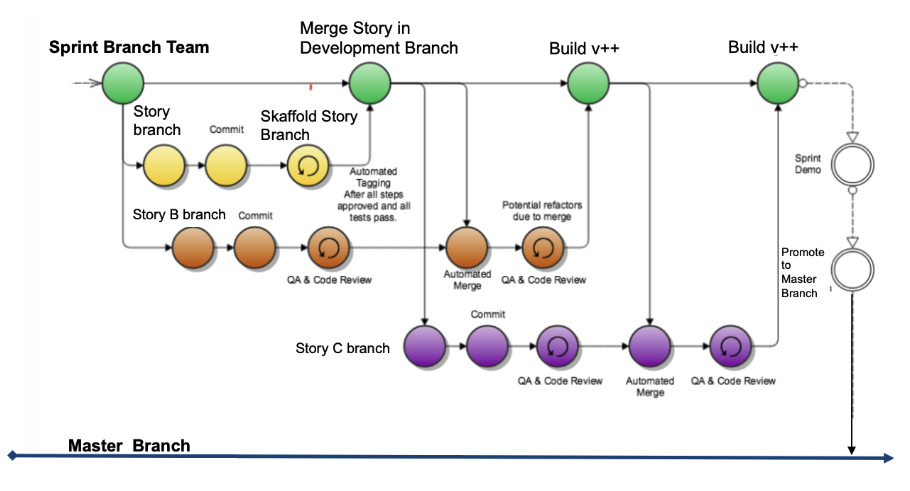Functional Architecture
The technological services provided by Lanificio Digitale's platform are divided into four distinct areas:
Farm
Enables the management and monitoring of the Kubernetes infrastructure, providing an Internal Developer Portal (IDP) that allows:
- Team, profile, and developer management
- Cluster management and related stage/production environments (namespaces)
- Design of microservices (type, technological stack, components, service, endpoint, etc.)
- Use of basic templates for major technological stacks ready to create new functional microservices, both frontend and backend
- Execution management of automated pipelines for CI/CD management
- Deployment management with rolling or canary strategies
- Uses an API gateway that correctly routes the service within Kubernetes, orchestrating communication with the authentication system
- Visualization of logs, monitoring, and alert systems to facilitate troubleshooting of infrastructure, microservices, and automated pipelines
- Distribution of an SDK console for operating with IDP through a client installed on each development team member's PC (cf-tools), allowing them to work securely with the platform for all dev and ops activities.
The set of tools and services provided by the farm facilitates, even for less experienced teams, the use of modern development methodologies (Test Driven Development) by making available CI/CD pipelines that increase innovation speed, reduce development costs, and simultaneously meet the essential requirements for software quality and reliability.

Meta Application Portal Framework
A proprietary development framework named "MAP," which, through the integrated core APIs/libraries with the metadata manager and framework sync engine, promotes the development of microservices architectures. It is metadata-driven, multi-tenant, and designed for web-based applications in standard HTML5 (progressive web apps).
This framework accelerates the development of functional microservices from scratch, utilizing the proprietary development framework consisting of the following components:
- Metadata Manager: Manages data structures related to microservices based on metadata, defining their characteristics, relationships, and purposes (a key feature of the development framework).
- Core API/Library: Implements the CQRS pattern for data writing and reading (CRUD), abstracting from the integrated database engine with metadata logic.
- Sync Engine: Data synchronization engine for microservices using certified asynchronous messaging protocols (master -> slave, online -> offline).
- CRUD Service: Allows data collection with just a few clicks using the set of web components integrated with the map core API.
- Progressive Web App: The integrated core API libraries and sync engine, along with metadata-driven management, enable easy handling of offline functionality with locally persistent data synchronized in near real-time through a service worker.
- Orchestrator: Workflow engine that orchestrates microservices related to the same functional domain according to the BPMN standard.
Application
Enables the creation and management of apps for internal or external distribution, composed of microservices both internal and external, even orchestrated for more complex processes. It leverages the micro frontend pattern, providing a basic framework for easy integration with horizontal micro frontend web components and vertical micro frontends associated with the microservices that make up the application.
The anticipated functional areas include:
-
Application Manager: Allows the creation of an application as an aggregate of microservices associated with a defined service plan.
-
Auth: Manages authentication/authorization logic for access to accounts/services/APIs using tokens.
-
Users: Handles user profiling with a delegated multilevel administration logic.
-
Cms Headless: Provides simplified access to APIs through a customizable back office for each user profile and user group, catering to non-technical personnel.
-
Multi-Tenant: Facilitates data segregation across multiple environments, making it easy to distribute SaaS services by sharing infrastructural resources among multiple clients.
-
Billing Service: Manages diversified billing logic, both consumption and user-centric, to facilitate the monetization of SaaS services.
Marketplace
Provides a developer portal with public APIs that offer a self-service ecosystem, fostering collaboration between the organization, partners, and third-party actors. This collaboration accelerates the development of applications. It allows client companies to transform internally developed APIs into monetizable resources.
Evaluation logics of the Platform's Impact
The Lanificio Digitale platform significantly enhances the productivity of development teams by simplifying manual tasks, providing access to preconfigured tools and resources, supporting standardized development processes, and disseminating best practices.
In summary, it develops as follows:
-
Automates repetitive tasks: The LD platform automates many manual tasks for teams, such as creating development environments, provisioning resources, deploying applications, monitoring, and error management. This allows development teams to focus on development activities and creating value for customers.
-
Provides access to preconfigured tools and resources: The platform offers development teams access to preconfigured tools and resources, such as integrations with cloud services, code repositories, monitoring platforms, which can be used without the need for manual configurations.
-
Supports standardized development processes: The platform supports standardized development processes and the dissemination of best practices, enabling development teams to focus on creating value for customers rather than configuring environments.
-
Improves code quality and production releases: The platform integrates DevOps methodologies and provides tools for assessing code quality, allowing development teams to deliver high-quality code.
There is no single value or standard percentage that describes the impact of development platforms on development team productivity, as it depends on various variables such as team size, project complexity, technology quality, and DevOps practice maturity. However, some studies have found a significant increase in the productivity of development teams using development platforms and DevOps methodologies.
For example, a GitLab study found that teams using DevOps methodologies and development platforms release features twice as fast as teams that do not. Another study by Puppet found that DevOps teams solve problems twice as quickly as non-DevOps teams.
The Internal Developer Platform (IDP) can be deployed both as a Software as a Service (SAAS) and a Platform as a Service (PAAS).
The experienced results from the adoption of the platform in different contexts are summarized below:
| KPI PLATFORM | VALUE |
|---|---|
| Production release frequency | x4 |
| Time-to-market reduction | x2 |
| Onboarding speed within the team | x8 |
| Developer operations speed | x2 |